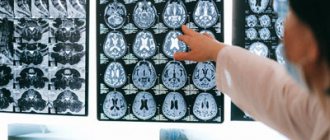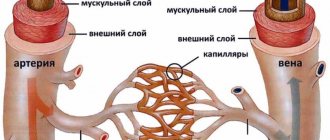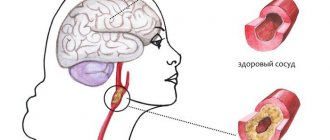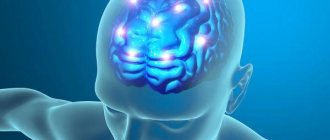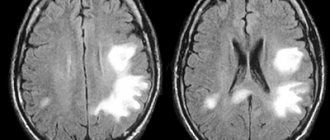Transplantation of various organs has long been no longer a miracle: the heart, kidneys, liver, bone marrow successfully take root in the new body. However, until now, an operation to transplant the brain from one person to another has been inaccessible, although medical scientists are tirelessly searching for a solution to this problem.
The central part of the nervous system requires a special approach. When will doctors perform such operations without problems? What is the cost of a brain transplant? And who will the person (the body that received the brain) become: himself or the one who was the previous owner of the new organ? These and other questions interest many. But perhaps the most intriguing question remains: will the transplant provide eternal life and human consciousness? To answer them, you need to take a short excursion into history.
Brain transplantation is the surgical transfer of the brain to another body while preserving the patient’s identity.
History of development: is it possible to do a brain transplant?
Experiments have been conducted since the last century on experimental animals:
- In the mid-20s, for the first time on the planet, scientists S. Bryukhonenko and S. Chechulin, thanks to the autojector and artificial blood circulation machine they created, proved the possibility of the separate existence of a dog’s head without a body. She could move her eyes, tongue, respond to touch, and, moreover, swallow pieces of food. The animal's head lived on the platter for almost two hours.
- And in the mid-50s, V. Demikhov “sewed” the second head on twenty dogs.
- In the early 70s, the American neurosurgeon R. White was able to keep a monkey brain alive in an isolated state for two days. A few years later, White was able to transplant rat and monkey heads into other animals that lived twice as long as the isolated monkey brain. The scientist was unable to achieve a connection between the spinal cord and the brain stem, so the motionless torso served as an artificial assistant to the life of the head. Brain death in both cases occurred due to edema developing at different times
- In the early 80s, a partial brain transplant was successfully carried out by D. Krieger from one mouse into the brain cavity of another in order to replace the diseased area with a healthy one. Only one attempt out of eight was unsuccessful.
Scientists, having studied such an important issue as brain transplantation for almost a hundred years, have not reached a consensus on the possibility of this operation. Moreover, just a few decades ago it was difficult to imagine that a human head could be transplanted onto another body. However, in 2021, neurosurgeon scientist S. Canavero proved this possibility after a successful operation. Although an inanimate body was used as a patient.
Neoman
Of course, there is more to human personality than connections between neurons. This is a whole world consisting of images, memories and fantasies. Is it possible to provide all this to a soulless machine? Will the cyborg experience emotions or become just an accumulator of information collected over centuries in the “skull box”? In addition, there are many ethical issues. Will it turn out that immortality will be available only to the richest? What will cyborgs do, what values will they profess? Is there enough space on the planet for everyone - both mortals and immortals?
“The emergence of a neo-human will be accompanied by a new ideology,” Dmitry Itskov is sure. — Until they reach old age, people will live as they are used to, in ordinary bodies. And then they will transfer their consciousness into cybernetic bodies, and they will become available to everyone. Everyone will be able to choose whether to die naturally or continue to live. There is no threat of overpopulation on Earth: new technologies will make it possible to develop other planets.”
It would be a good idea to ask the neoman himself what he wants to receive from eternity. Will he not prefer even greater consumption to spiritual growth, will he not subordinate mere mortals to his goals unknown to us? There is no one to ask yet. But the wait won't be long. As they promise us, no more than 10 years.
Is a brain transplant possible: what scientists say
According to A. Bordey, an employee at Yale University, a brain transplant is possible, but to achieve the desired effect, a spinal cord transplant is also necessary, otherwise the person will be deprived of independent movement. As for preserving the soul and individuality, it is difficult to predict and give an unambiguous answer.
After all, when the body grows and develops, the brain also changes, therefore, during transplantation and regeneration, a person’s personality will certainly change. Only one shock will leave its mark.
According to the professor, after transplantation of this organ, the individual will not be granted immortality. After all, the brain also ages. Advances in science have successfully made it possible to replace kidneys, other organs, and even the heart with artificial ones, but it is impossible to replace the brain in this way. This is fraught with neurodegeneration, which will lead to the formation of tumors or decreased intelligence.
According to another scientist from the same university, H. Abbed, the transplant is quite real, but for now in the future. When the problem of connecting the patient’s brain to the spinal cord is successfully resolved. While the task is unsolvable, the latter’s injuries are fraught with irreversible consequences.
When this becomes a reality, then, according to the professor, the patient will acquire a personality along with the transplanted brain - after all, it is he who is responsible for this feature.
But another scientist K. Slavin is convinced that it is not far off when neurosurgery will be able to connect the body to the brain, and not vice versa. And such bodies will be created artificially. At the same time, the person will retain his entire personality. But he also agrees with the opinion of other scientists that even this will not ensure immortality. To solve this problem, you need to find a means that can “start” the renewal process at the cellular level.
What opportunities does it open?
If in the future science advances the development of technology in this direction to such a level that human brain transplantation becomes a completely common procedure, this will make it possible to use it, for example, in the following situations:
- in case of bodily injuries incompatible with life;
- for the treatment of oncological diseases;
- with dangerous congenital bodily defects;
- to get rid of severe mental illnesses that can only be treated by relieving symptoms;
- for complex burns covering most of the body;
- with functional organ failure.
It can also be used for gender reassignment, for transplanting a thawed cryopreserved brain into a grown body and solving other problems.
Read more about the law on automatic probate of organs
At the moment, this project is at the finalization stage. Ultimately, it is planned to issue a law that will guarantee reliability and safety for both parties - the donor and recipient, as well as their loved ones. The project will include a description of the following processes:
- establishing the exact time of death;
- assessment of the condition of internal organs and the extent of damage;
- identification of parts suitable for transplantation;
- the possibility of relatives influencing the permission of transplantation;
- creation of a unified database of those who refused or agreed during their lifetime, a database of those in need of a transplant, indicating the required organ, blood type and other factors affecting the success of transplantation;
- the ability to track the entire path of an organ, starting from the donor and ending with the recipient.
From the editor: Recipes for improving memory and brain function using folk remedies
Those who oppose this bill argue their position due to the possible danger to the lives of those on the registry. For example, kidnapping, murder under the guise of an accident, etc.
However, those involved in the creation of the document assure that access to this database will be limited. That is, anyone who wants to view the data will not be able to. When creating such a register, the experience of American colleagues is taken into account. Only emergency services personnel have access there - police, fire service, ambulance, rescuers. Also, in the USA, consent or refusal for transplantation is issued upon receipt of a driver’s license.
In addition, the law provides for the creation of state standards for doctors who must coordinate among hospitals where death is certified and transplant centers. Also, these specialists will evaluate the donor body parts, check the refusal or consent for organ transplantation, their suitability and compliance with the main parameters.
In Russia, the only city where the transplantation system is established at the state level is Moscow. There are about 10-12 hospitals here, specializing in transplants of different levels of complexity.
How is a brain transplant done?
As mentioned above, half a century ago the scientist R. White managed to transplant a monkey’s head into the body of another. Dr. Canavero suggests using a similar technique. According to him, the main problem remains manipulation of the spinal cord on both sides.
Transplanting a head along with the brain requires cooling the body to a certain temperature, after which the spinal cord is removed and one is replaced with the other, plus it will be necessary to connect the new body and head, for which glue (inorganic polymer) is used. This method has been used on experimental dogs and other animals.
The complexity of the operation lies in the reverse alignment of all the arteries, muscles, nerves and many other connections. However, when even a few of them are restored, one can already hope that the patient will not be immobilized. Electrical stimulation of the spinal cord is then used to teach new functions to nerve cells.
The operation will require a huge number of doctors—at least a hundred—to carry it out in one and a half days. The heads must be removed in a single step, no more than 60 minutes are allotted for their reconnection - the human brain cannot remain longer than this time, since a constant flow of oxygen and blood is necessary. When asked how much a brain transplant costs, neurosurgeon Canavero said the operation would cost at least £9 million in the future.
To carry out a brain transplant operation, according to scientists, a team of hundreds of doctors will be needed
Features of brain transplantation
Although this is not as large-scale an operation as a head transplant, and does not require the movement of all muscles, vessels, nerves and tendons, however, other difficulties arise - his reaction to the replacement of the torso, a different configuration of the skull, is unknown. There are also other obstacles without overcoming which a successful brain transplant is impossible:
- Restoration of pathways in the central nervous system (reinnervation). A huge number of nerve fibers and conductors are closely connected to the brain, a significant part of them passes through the spinal cord, and if they are destroyed, they are, as a rule, unable to recover. It is necessary to artificially regenerate them.
- The problem of tissue rejection. Their incompatibility causes swelling; it can manifest itself literally in a couple of hours, and sometimes it makes itself felt only after a while, for example, several days. Edema during transplantation is the main cause of brain death with its own distinctive features. It will be necessary to solve tissue compatibility problems and suppress rejection.
- Regeneration of nerve tissue. They themselves are practically not restored, and a human brain transplant is always associated with brain damage.
- Protective reaction of the body. She does not accept foreign bodies, so her behavior during transplantation of a new organ is unpredictable and may even stop functioning. To block the patient's immunity, he is prescribed immunosuppressants before surgery. The success rate increases, just like getting the disease.
A human brain transplant is an extremely complex operation. The technique of conducting it involves not only solving problems with maintaining the integrity of the brain, but also how the shock will be perceived by the body and how much it will affect the psyche. In addition, it will be necessary to reconnect all tissue areas, nerves, and vessels with each other to the greatest precision. If nerve fibers are damaged, the brain will not send signals to the body, which means that an incorrect reaction to stimuli will occur and control over the corresponding tissues will be lost. As a result, the new body will become “uncontrollable.”
To implement this task, S. Canavero intends to use human brains that have undergone cryo-freezing of bodies. According to the scientist, it is possible that he will be able to breathe life into the first frozen patient as early as 2021.

